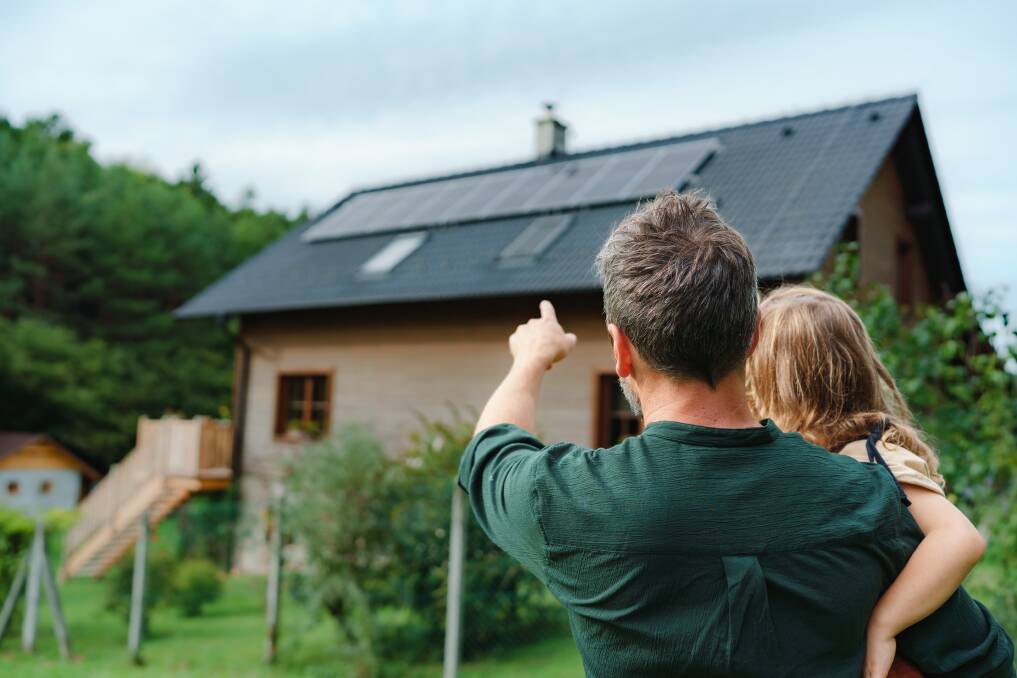From The Sticks To The Suburbs: How Sustainable Are Aussie Homes?

This is branded content.
Australia is a diverse country, with people living in the inner-city, suburbs, outer suburbs, regional areas and way out in the middle of nowhere.
We call a great many areas home, with some people living in coastal settings, and others preferring to live amongst the gum trees.
The design of our homes varies wildly as well, with towering apartment blocks, Californian bungalows, weatherboard period homes and all other sorts of period home designs.
But just how sustainable is Aussie home design?
If you're considering buying a property or you're just curious, this article will share the different approaches to sustainable home design in Australian homes for both urban and country living.
Continue reading to learn more.
Steel Fencing And Roofing Design
One popular sustainable choice of material for fencing and roofing used in Aussie homes, both in the suburbs and the sticks, is Colorbond fencing. There's a good reason many Australian homeowners prefer this durable steel material to border and protect their homes. To begin with, Colorbond steel is manufactured right here in Australia, so using this material for roofing, fencing, and other design elements means Aussies are supporting the local economy and jobs. This is a point of pride for many Australians, and aside from that, it's reducing import costs (and fuel) on foreign products being shipped in from overseas.
However, it's not all about shopping locally and Aussie pride. Colorbond is also ideally suited for withstanding Australia's classic harsh climate conditions. Colorbond has a significantly longer lifespan when compared to timber fencing, which will quickly wear, rot, and fade in the harsh Australian sun, especially in regional and rural areas.
And unlike other metal materials, such as untreated steel or wire fencing, Colorbond is also corrosion and rust-resistant. This is due to the patented five-layer design with a solid steel base that is coated in a metallic, corrosion-proof material. Colorbond even offers a 10-year warranty on its fencing and roofing materials, standing by its commitment to longevity and quality.
Disaster Resistant Home Design
Part-and-parcel with living in rural and regional Australia is facing the reality of natural disasters. This country, while beautiful and rich, is also prone to some of the world's most extreme natural disasters that up to 70% of us are affected by. From flash floods, to cyclones, bushfires and intense storms, Aussie homeowners living in the sticks need to ensure their homes can resist these wild weather events. A bonus to this is that these home design elements often also boost overall sustainability.
For instance, polished concrete or tiled floors can make for more effortless clean up and recovery following floods, and they don't require the milling of any timber - unlike hardwood floors. Another flood-resistant home design feature is installing louvres in the walls of the lower levels, which enables water flow and can reduce damage to the property.
Another common fire-resistant home design feature for countryside properties is a sprinkler system installed on the roof, linked to a water tank. The water tank collects rainwater, and the sprinkler system is powered by a pump (sometimes solar-powered). In the event of a fire, before evacuating, the homeowner can switch on the sprinkler system, which means it keeps the roof of the house wet, reducing the chance a bushfire will consume the home.
You can see how these design elements increase rural and regional properties' natural disaster resistance while also working to lower the overall carbon footprint of the home.
Solar Panels
One particularly excellent way Aussie homeowners, both urban and regional, make their homes more sustainable and energy efficient is by having a qualified electrician install solar panels on their roofs. They provide renewable energy, reducing the amount of coal-powered electricity these households consume and thus massively reducing the home's carbon footprint. At the peak of summer, these homeowners can completely power their homes with their solar panels, as long as their energy usage is relatively modest and the solar panels get installed in a north-facing direction to take full advantage of peak sunshine hours - a perfect example of sustainable passive design.
As well as reducing reliance on fossil fuels for electricity, installing solar panels means Aussie homeowners save money on their utility bills, allowing them to enjoy greater financial freedom. Some homes also have solar-powered hot water, therefore reducing the reliance on gas.
Induction Cooktops
Gas cooktops are reliant on burning gas, a fossil fuel that contributes to global warming, and also has potential health impacts for those inside the home due to the by-products burning gas creates such as carbon and sulphur dioxide, which can be harmful when ingested in large quantities. This is especially problematic for asthmatics.
Many Aussie homeowners are switching to electric induction cooktops that provide precise control over cooking temperature without the associated harm of gas. In fact, some houses have wholly transitioned away from using it as a heat source. In Victoria, all newly built homes are banned from using any gas appliances at all, highlighting the commitment to building more sustainable, healthier homes.
A Sustainable Summary
This helpful article has shared sustainable insights from the sticks to the suburbs, and has informed you how Aussie homes are leading the way in design elements and building materials to ensure houses continue to become more energy efficient, long-lasting, and durable against environmental hardship.
Though there is still much to be done in the face of the climate crisis, making our homes more sustainable, wherever we live in Australia, is one easy and important change we all can make.


